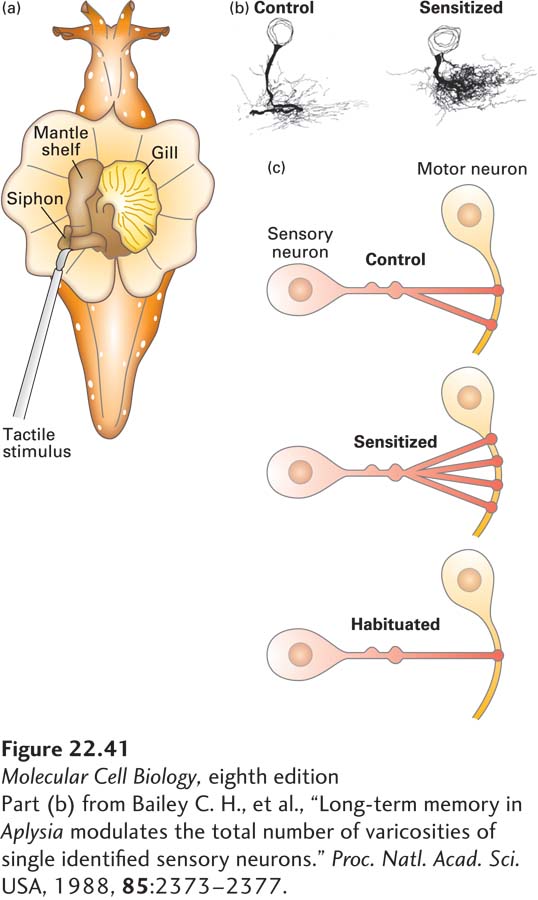
FIGURE 22- 41 Long- term memories are stored as changes in synaptic connectivity. (a) The sea slug Aplysia californica is a model system for studying the cell biology of synaptic plasticity and memory. Tactile stimulation of the siphon (a tubelike structure through which water flows) stimulates the gill- withdrawal reflex. In habituation, the siphon is repeatedly touched, which habituates the animal to this stimulation and reduces the amplitude of the gill withdrawal. In sensitization, the animal receives a noxious stimulus like a tail shock, which sensitizes the reflex so that the gill- withdrawal amplitude is enhanced. (b) Stereological reconstructions of siphon sensory neurons from control animals and from animals that have undergone long- term sensitization of the gill- withdrawal reflex. Notice the expansion of the sensory neuron branches after sensitization. The growth of neuronal processes is accompanied by a growth of new synaptic connections between the sensory and motor neurons. (c) Illustrations showing the changes in connectivity that occur during plasticity of the gill- withdrawal reflex. Sensitization is accompanied by the growth of new connections between the sensory and motor neuron, while habituation is accompanied by a decrease in the number of connections between the sensory and motor neuron.
[Part (b) from Bailey C. H., et al., “Long- term memory in Aplysia modulates the total number of varicosities of single identified sensory neurons.” Proc. Natl. Acad. Sci. USA, 1988, 85:2373– 2377.]
[Leave] [Close]